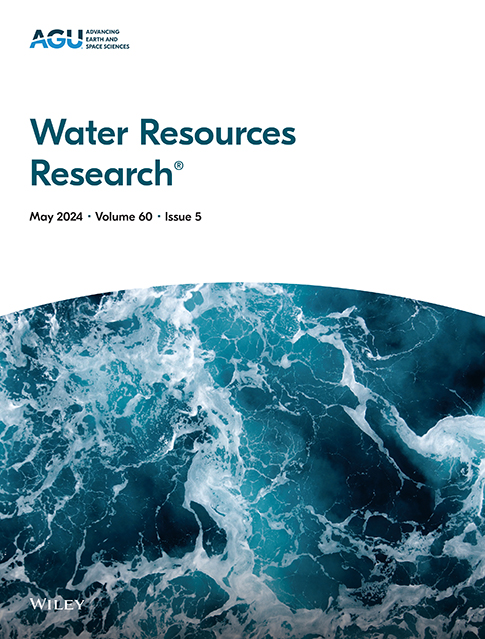Quantitatively Decoupling the Relationships Between Discharge and Sediment Yield During Flood Events in China's Loess Plateau
IF 4.6
1区 地球科学
Q2 ENVIRONMENTAL SCIENCES
引用次数: 0
Abstract
To clarify changes of discharge (Q) and sediment yield (SSY) during flood events provide critical insights for flood disaster prevention and control. However, our understanding of the long-term variations and driving factors of Q-SSY relationships during flood events remains limited. This study examined the variations in Q, SSY, and sediment rating curves (SSY = aQb) during maximum one, three, and five flood events (ranked by peak discharge) across 15 catchments in the China's Loess Plateau during 1956–2019. We used the partial least squares-structural equation modeling (PLS-SEM) to quantitatively decouple the effects of driving factors (precipitation, soil, vegetation, topography, and soil and water conservation measures (SWCMs)) on Q-SSY relationships. There was a significant declining trend in both Q and SSY during flood events across catchments, but their contributions to annual SSY significantly increased by 41.48%, underscoring the critical role of floods in sediment transport. The Q-SSY relationship during flood events became weakened over time, with coefficient a decreased and index b increased. The five driving factors explained 44%–49% of the changes in coefficient a and 36%–51% in index b. Significant direct effects of vegetation (path coefficient (β) = −0.921) and precipitation (β = 0.616) on coefficient a were observed (p < 0.05). Index b was principally dominated by SWCMs and vegetation, and the effects diminished with increase in number of flood events. These findings highlight the importance of vegetation cover and SWCMs in mitigating sediment transport, offering valuable insights for sediment management strategies in the Loess Plateau and similar regions.中国黄土高原汛期流量与产沙量的定量解耦
阐明洪涝灾害中流量(Q)和产沙量(SSY)的变化规律,为洪涝灾害的防治提供了重要的依据。然而,我们对洪水事件中Q-SSY关系的长期变化和驱动因素的理解仍然有限。本研究研究了1956-2019年中国黄土高原15个流域在最大一次、三次和五次洪水事件(按峰值流量排序)期间的Q、SSY和沉积物等级曲线(SSY = aQb)的变化。我们使用偏最小二乘-结构方程模型(PLS-SEM)定量解耦驱动因子(降水、土壤、植被、地形和水土保持措施)对Q-SSY关系的影响。各流域在汛期Q和SSY均呈显著下降趋势,但对年SSY的贡献显著增加41.48%,说明洪水在输沙过程中起着至关重要的作用。随着时间的推移,Q-SSY关系逐渐减弱,系数a减小,指数b增大。5个驱动因子分别解释了系数a变化的44% ~ 49%和指数b变化的36% ~ 51%。植被(径系数(β) = - 0.921)和降水(β = 0.616)对系数a的直接影响显著(p <;0.05)。指数b主要由swcm和植被主导,随着洪水次数的增加,影响逐渐减弱。这些发现强调了植被覆盖和swcm在减少泥沙输运中的重要性,为黄土高原和类似地区的泥沙管理策略提供了有价值的见解。
本文章由计算机程序翻译,如有差异,请以英文原文为准。
求助全文
约1分钟内获得全文
求助全文
来源期刊

Water Resources Research
环境科学-湖沼学
CiteScore
8.80
自引率
13.00%
发文量
599
审稿时长
3.5 months
期刊介绍:
Water Resources Research (WRR) is an interdisciplinary journal that focuses on hydrology and water resources. It publishes original research in the natural and social sciences of water. It emphasizes the role of water in the Earth system, including physical, chemical, biological, and ecological processes in water resources research and management, including social, policy, and public health implications. It encompasses observational, experimental, theoretical, analytical, numerical, and data-driven approaches that advance the science of water and its management. Submissions are evaluated for their novelty, accuracy, significance, and broader implications of the findings.
 求助内容:
求助内容: 应助结果提醒方式:
应助结果提醒方式:


